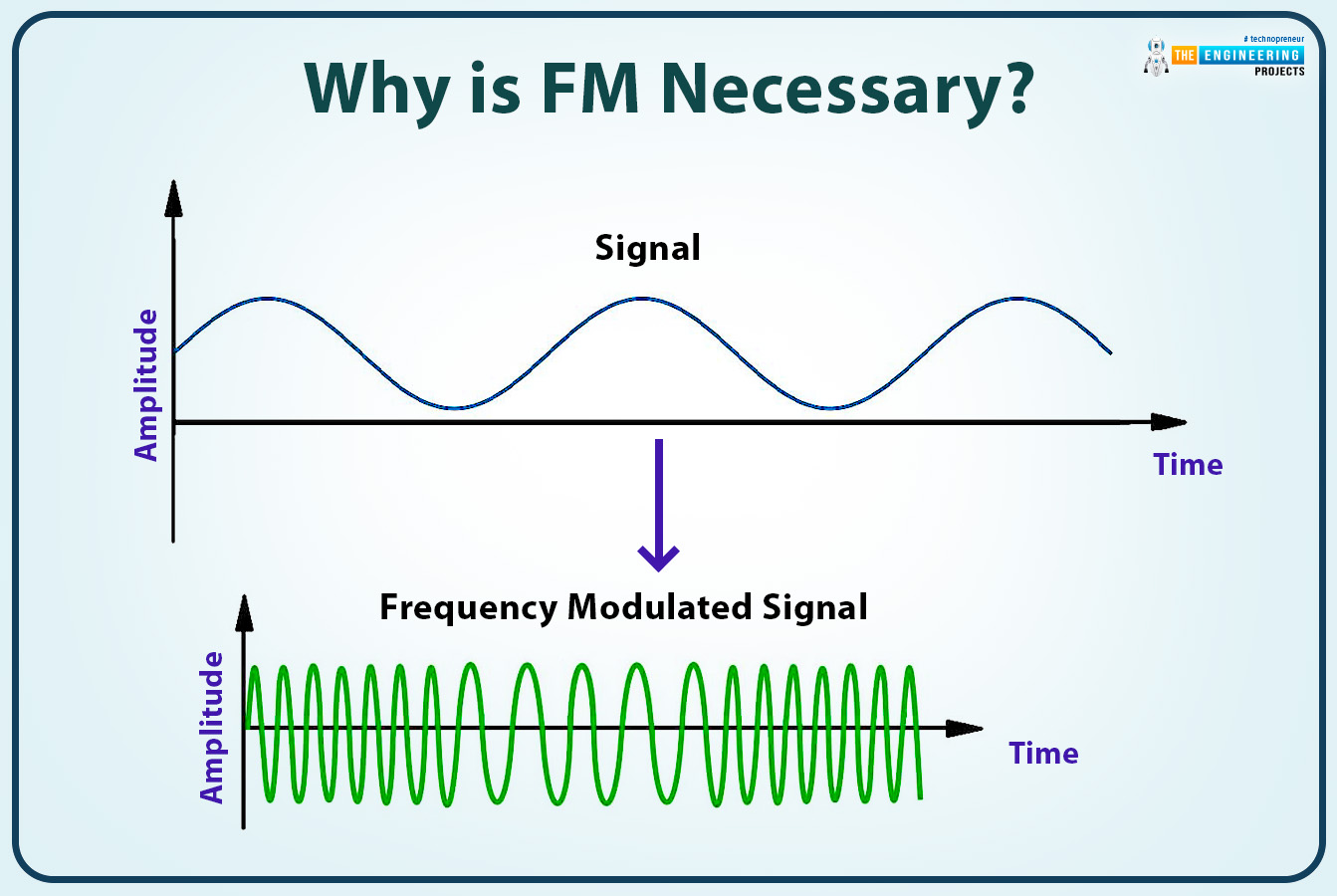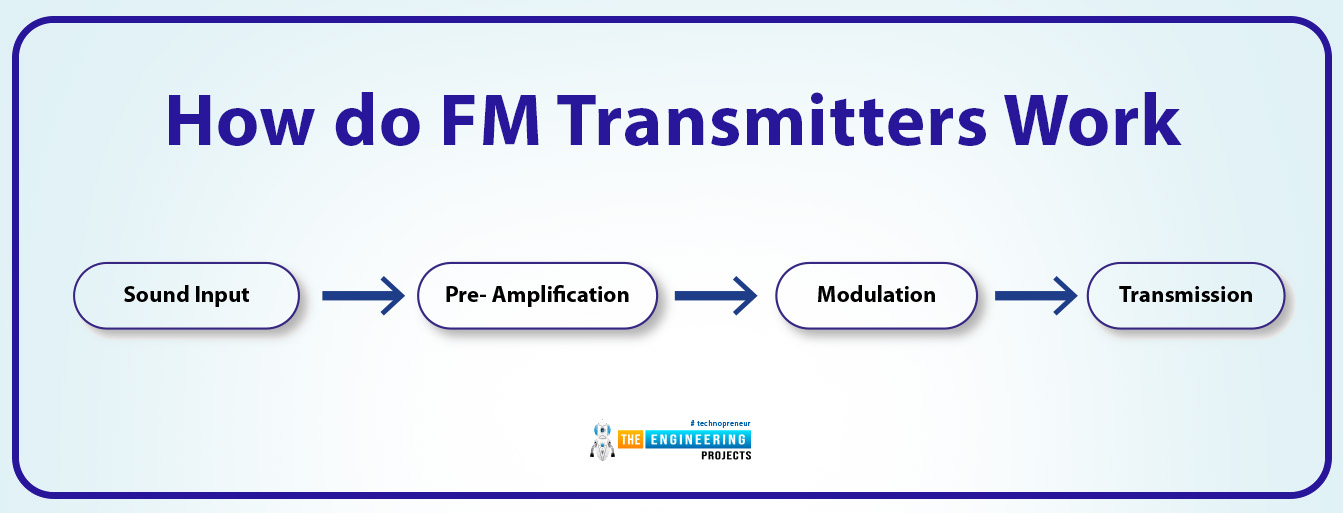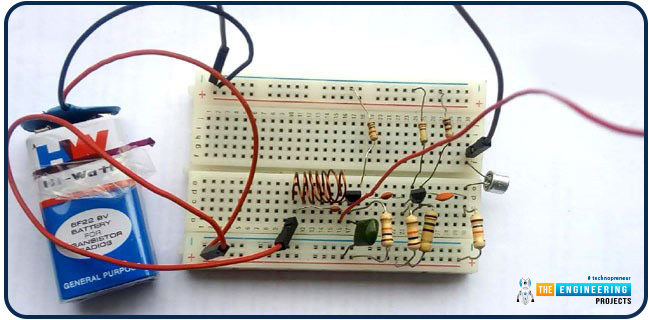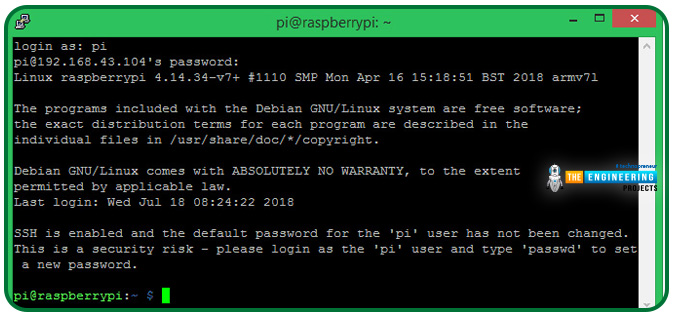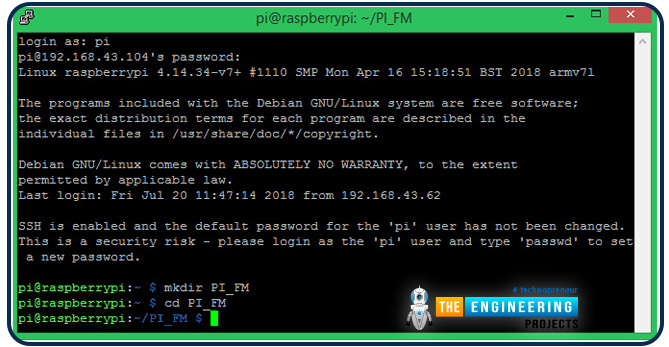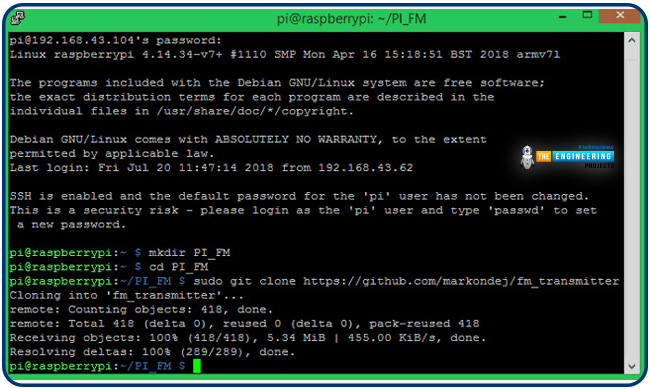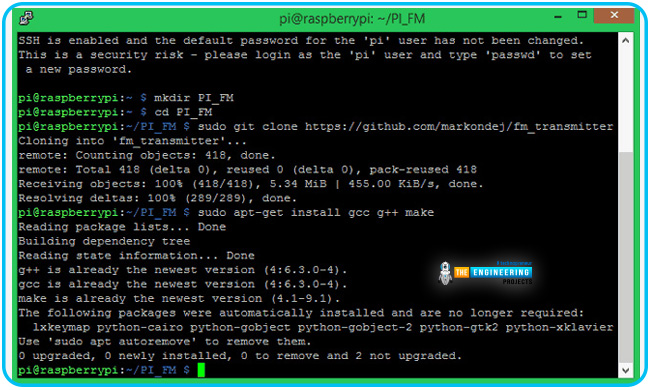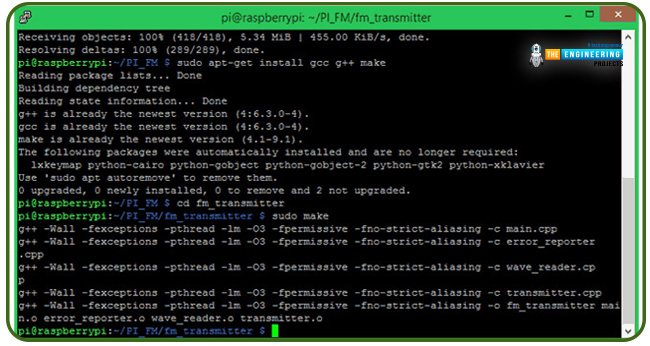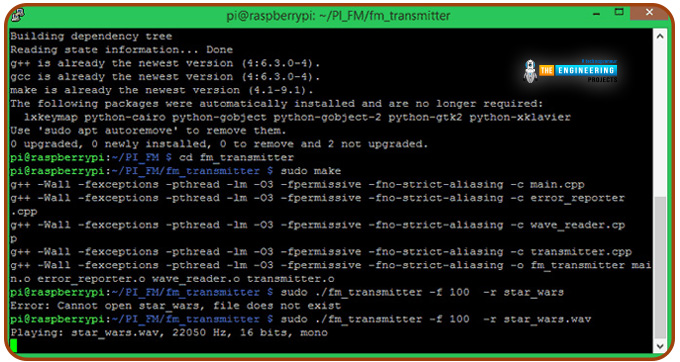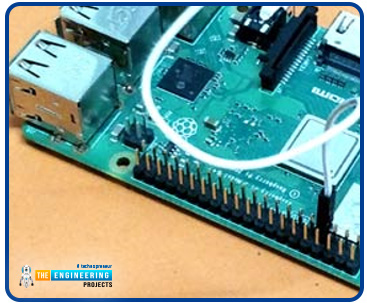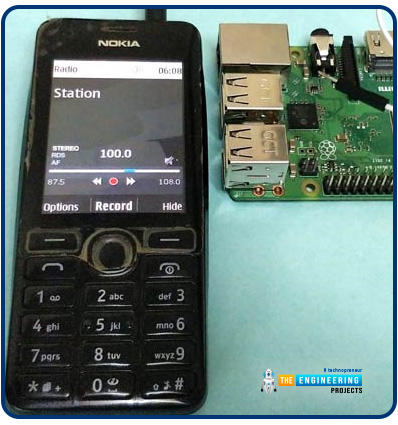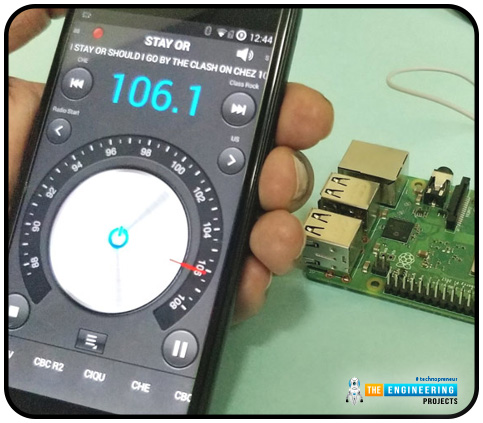
Throughout our lives, we've relied on Radio and tv stations to keep us engaged. While we're on the subject of contradictions, it's also fair to say that these Stations can become tedious at times due to the RJ rambling on about nothing or annoying advertisements, and this may have left you wondering why you can't own a Radio station to broadcast your data over short distances.
Almost any electronics technician uses coils and other hardware to make an FM transmitter, although the tuning process is time-consuming and difficult. Setting up your FM station and going live in your neighborhood shouldn't take more than 30 minutes using an RPi. If you use the right antenna, you must be able to transmit to your school or community within 50 meters. Wow, that's interesting! So, let's get started right now.
Caution: This project is an education project and should not be abused in any way that might harm or inconvenience anyone. Interfering with neighboring FM frequencies is illegal, so please exercise caution when using this feature. In the event of any mishaps, we take no responsibility for them.
| Where To Buy? | ||||
|---|---|---|---|---|
| No. | Components | Distributor | Link To Buy | |
| 1 | Jumper Wires | Amazon | Buy Now | |
| 2 | Raspberry Pi 4 | Amazon | Buy Now | |
Components
Raspberry Pi
Internet connection
Microphone
An enthusiastic RJ
Pre-requisites
Your RPi should already be running an os and be able to establish a network connection. If you haven't done so already, go through the instructions on how to use a raspberry pi.
A virtual server such as VNC, or a putty terminal window, is assumed to be accessible to you at all times. For the sake of this tutorial, we will run the program on RPi using the putty terminal session.
Frequency Modulation: What is it?
A method or procedure known as FM involves changing the carrier signal frequencies to match the frequencies of the modulated signal to encode information on a specific signal. Since data must be conveyed after being transformed into an electrical signal, a modulation signal is simply that.
A carrier's signal is transformed by an original signal in the modulation technique, which uses a methodology similar to amplitude modulation. On the other hand, FM maintains or maintains a steady signal loudness.
Why is FM necessary?
Fm is primarily used to decrease noise as well as the size of antennae, respectively. We know that a bigger antenna is required to send reduced frequency signals, whereas a smaller one is necessary to broadcast high-frequency signals.
Therefore, the sound signals are transformed into high-frequency radio waves and broadcast using the FM technique. Once more, the demodulation circuit on the receiver's side converts the high-frequency radio transmission frequency into the original understandable audio signal.
There is little interference since different signals are transmitted over a specific channel using separate wavelengths. So many folks can converse simultaneously and unhindered in a large metropolis.
FM transmission using coils
The construction of a long-range FM transmitter has long been on my bucket list of cool things. I've been so intrigued by some of the transmitter's uses, particularly since I was a kid, and spent much of my time fantasizing about how awesome it would be to have a few of the technology and technologies used in espionage movies. So lately, while reviewing one of my residence automation projects by using RPi and the motion package library, I felt it would be cool to add audio to the deliverable and stream live, so in addition to the multimedia feedback provided by the RPi, I could also get sound feedback out from area under monitoring. Even while this FM transmitter would not let me hear distantly (a range exceeding 10 kilometers), it will at least enable me to maintain an "ear" on events while I am about the property; then, after building it, I would have accomplished a few of the objectives that the younger me had set out to attain. It took me a few days ago, but I eventually got the motivation to make one, and I'll show you how to do it in today's post.
To avoid violation of policies of some countries, this experiment is being conducted solely for educational and scientific purposes. Keep the FM transmission at a low range and make sure it is built in compliance with applicable laws of one’s nation and therefore does not induce a disruption to others. This is essential. For any mishaps, I take no responsibility.
How do FM transmitters work
Using the concepts of the modulated signal, an FM transmitter can transmit the audio it receives from its input. Most FM transmitters are constructed in the manner depicted in the diagram below.
An amplification is frequently included in the transmitters because the transmission power of audio input is relatively low. This is done by utilizing an oscillator component to produce the carrier signal, which is then combined with an audio stream to generate a modulated signal that can be transmitted. When it comes to communicating, the low-impedance modulation signal is fed via a power amplifier to get to the antenna.
FM broadcast circuit
The electrical component should be connected as illustrated in the following FM transmitter diagram.
In this photo, you can see the prototype version of the FM radio transmitter.
The first transistors amplify the mic's output signals to a level suitable for transmission because the mic's output waveform is typically modest. In addition to amplification, the transmitter must also modulate. After that, the boosted audio signal is combined with the desired transmission carrier frequency to create a final signal. Because there is no visible output to identify the precise frequency where the transmitters are working, you may need to modify the FM transceiver radio well within the frequency range stated above to get the transmission frequency. This carrier signal can be differed using a 20pF capacitor attached to the inductor. The traditional spectral range of this specific design would be between 88MegaHeartz and 108MegaHertz. Once the carrier signal has modulated the audio signal, it is sent to the antenna, where it is received.
The resistors and capacitors used aren't set in stone, so you can experiment with them to get the best performance out of the transmitters.
Several other uses for this design aren't mentioned above, such as baby monitors or school address systems. Before constructing any of those practical items, please remember to check your local laws.
How Pi 4 works as a transmitter
How can RPi, a board designed to serve as a development platform for microprocessors, do all of this? What if I don't need extra hardware to use the board as an FM station?
To prevent interference problems, each CPU will have a synchronized digital device. A signal known as a Spread-spectrum system clock, or SSCS is responsible for this Electromagnetic interference suppression. This frequency ranges from 1 MegaHeartz to 250 MegaHeartz, which fortunately fits well within the FM spectrum. We can make the Pi become an FM broadcaster by developing some code that uses the spread-spectrum clock frequency to modulate the frequencies. The Rpi Pi's GPIO pin 4 is where the frequency modulation will be sent. To use this pin as an antenna, we need a piece of standard wire attached to it no longer than 20 cm in length.
Getting the pi 4 readies for programming
Otherwise, read on for instructions on accessing your pi through the Command window if you haven't already done so. Boot Raspberry Pi with an HDMI connection to a display and an input device once you've installed a new operating system.
Link your Raspberry to the network by searching for a network option on the Raspberry desktop. Then go to the raspberry menu, click raspberry settings, and activate the SSH connection afterward. On your Windows or MAC computer, reconnect your computer to the same network as your Raspberry Pi so that both devices may communicate with each other on the local area network. You're ready to begin now that you've had Putty installed and running. Enter the Raspberry Pi's Internet protocol address and press enter. If you don't know your PI's Internet address, go to the admin side of your router and see if it's 192.168.43.XXX or something similar. An open command prompt will appear and ask for your login and passcode if all is done correctly. The default login and passcode are pi and Raspberry, respectively. Press Enter to see the next screen after entering it.
Convert Pi 4 into an FM station
GitHub provides the code needed to turn the Raspberry into a radio station. This page can be cloned directly into Raspberry; the application can be compiled and launched if you understand how to do so. Just follow the instructions below, and you'll be transmitting your audio files in no time.
Step 1:
Set up a new directory for our software files and put them there. Create a new guide by typing 'mkdir RPI FM' inside the command prompt, and then enter the folder using the word 'cd.'
mkdir PI_FM
cd PI_FM
Step 2:
We must now copy the application from GitHub and place it in the folder we just made. Since we've previously moved inside the folder, we can run the following command below to complete the task.
sudo git clone https://github.com/markondej/fm_transmitter
Step 3:
We'll need a C compiler and other tools to run the C program we just acquired. GCC and G++ are the tools for this code, and the software for compiling them is termed make. To obtain compilers, enter the code shown below. Once the file is downloaded, your display will appear like the one below.
sudo apt-get install GCC g++ make
Step 4:
Compiling the code is now a cinch. You can do this by going into the folder using the change directory 'cd' FM transmitter and then compiling the script with root user 'sudo make .'The screen below should appear once your code has been successfully compiled.
cd fm_transmitter
sudo make
Step 5:
Launching the system is the last step. The intensity for which we would like to transmit, and the identity of the audio recording we would like to play must be specified when the program is launched. Star wars.wav is the default sound file that will be retrieved together with the code. We'll play the Movie Theme song at a 100megahertz frequency for testing purposes. The launch line's syntactic structure is:
sudo ./fm_transmitter [-f frequency] [-r] filename
The channel will be 100 MegaHeartz long because we need to play the movie file at that frequency.
sudo ./fm_transmitter -f 100 -r star_wars.wav
Test the Pi 4 FM transmitter
After you have started the application and you see the playback message as seen above, we may link an antenna to a Gpio 4 of Raspberry, I use a standard connecting wire, and it works perfectly for me.
Take a Radio, then set it to 100MegaHeartz channel, and you'll be able to listen to the movie music being aired. After making sure it works, you may switch out the movie theme with any other music or audio recording you choose and broadcast it with the same instructions as in step 5.
Transmitting live sound
While playing pre-recorded audio clips is entertaining, using this Pi 4 FM broadcast live audio would be much more enticing. With the help of the same tool, this is also possible. Just plug a mic into the Raspberry Pi's USB connection and modify the startup command-line interface. For additional information on this, please visit the GitHub homepage. Use the comment section of the forums if you run into any issues getting this to function.
Applications of FM
When it comes to frequency modulation uses, radio transmission dominates the list. Due to its higher signal-to-noise ratios, it provides a significant advantage in a radio broadcast. That is, there is little radio wave interference as a result. This is the fundamental justification for why so most radio stations choose to transmit music via FM.
Furthermore, many of its applications can be found in telematics, geophysical prospecting, EEG, various radio technologies, music creation, and devices used for broadcasting video. Fm offers a significant benefit over all other modulations in a radio broadcast. It will resist radio wave disruptions far better than an equally powerful modulation amplitude (AM) signal because it has a higher signal-to-noise ratio. The majority of music is aired through FM radio for this important reason.
Radio transmission frequently uses pulse modulation technology. Each radio broadcast station has its frequency range, and all broadcaster station signals are sent over the same transmission system. We can adjust the Radio's tuning to link it to a specific radio channel.
Our pc connections also employ pulse modulation technology.
The pulse modulation method is employed in magnetic storage tape recording systems.
Radio Detecting And Range (RADAR) systems employ the pulse modulation approach.
Multimedia content communications, including voice/video broadcasts, also use pulse modulation technology. Most of the time, the sound is delivered over FM, and occasionally, the film is as well.
The modulated signal generates an electrical impulse for usage in electronic instruments.
The monitoring system also makes use of FM technology.
Audio is synthesized by using the FM technology in pc sound adapters.
Military communication systems like Walkie-Talkies employ pulse modulation technology.
Additionally, Bluetooth and Zigbee communications technology utilize the FM method.
The Broadcasting method is also employed in ambulance systems.
The satellite radio technology uses FM technology.
Due to its low electronic noise, this FM method is employed in two-way radio transmission.
Benefits of FM
Low noise distortion
A smaller antenna is needed for pulse modulation equipment.
The pulse modulation platform's can be built to consume little power. This is a significant benefit of the modulation technique.
The pulse modulation process is more efficient because the signal's amplitude is always consistent.
Drawbacks of FM
The frequencies modulation circuit has many intricate parts.
A carrier wave is required for the frequency modulation process.
Amplification modulation is appropriate for long transmission lines, while FM is not.
Conclusion
In this article, we have learned how to create a radio station using a raspberry pi 4 with a few very simple steps. We have broadcasted a Star Wars movie theme through this system, and now you can try many other forms of data to broadcast, including video and live sound using a mic to get more familiar with the system. The next tutorial will teach us how to build a temperature log.



